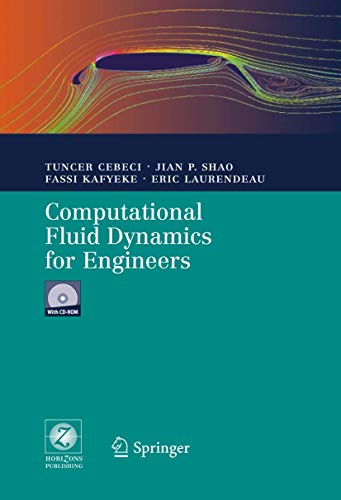Artículos relacionados a Computational Fluid Dynamics for Engineers: From Panel...
Computational Fluid Dynamics for Engineers: From Panel to Navier-Stokes Methods with Computer Programs - Tapa blanda

From the reviews:
"The narrow range of analytic solutions or solutions with little numeric effort requires the development of powerful computational fluid dynamics (CFD). ... The aim of this book is to introduce CFD. ... Most of the chapters include some examples with solutions and at the end a greater number of problems for own studies. The book is very useful for students and practising engineers." (Bernd Platzer, ZAMM - Zeitschrift für Angewandte Mathematik und Mechanik, Vol. 86 (11), 2006)
"This book is intended for use in the classroom, as the textbook for a two-semester course for advanced undergraduate and first-year graduate students. ... this book provides a solid introduction to CFD ... ." (Pasquale Cinella, AJAA-Journal, Vol. 44 (11), 2006)
"Sobre este título" puede pertenecer a otra edición de este libro.
- ISBN 10 3540244514
- ISBN 13 9783540244516
- EncuadernaciónTapa blanda
(Ningún ejemplar disponible)
Buscar: Crear una peticiónSi conoce el autor y el título del libro pero no lo encuentra en IberLibro, nosotros podemos buscarlo por usted e informarle por e-mail en cuanto el libro esté disponible en nuestras páginas web.
Crear una petición
